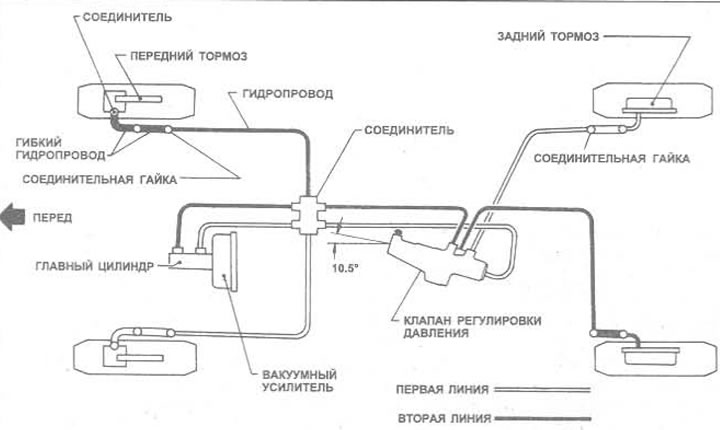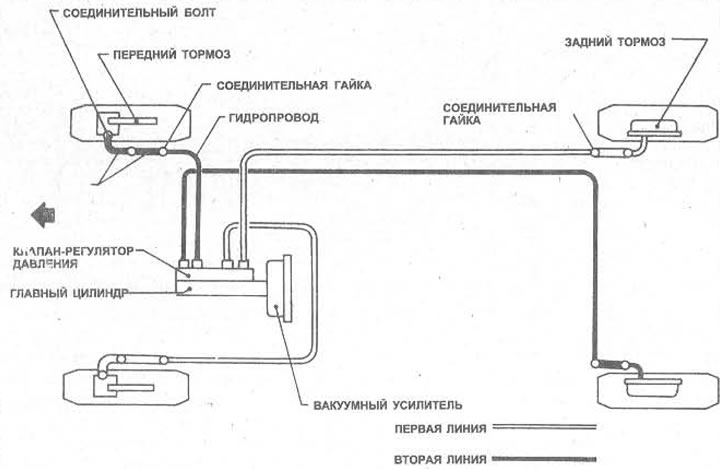
Fig.9.1. Brake system diagram - early models
To prevent rear wheel locking, early models are equipped with an inertia-sensitive pressure reduction valve that controls the pressure applied to the rear brakes. On later models, a pressure limiter is installed on the master cylinder. which turns off when a certain pressure is reached and any further increase in pressure is transmitted only to the front brakes. This type is carried out in a two-line configuration with four metal hydraulic tubes.

Fig.9.2. Brake system diagram - late models
Vacuum booster uses intake manifold vacuum (works only when the engine is on) to increase the force applied by the driver to the brake pedal and transmits this increased force to the master cylinder pistons. The servomotor transmits direct action from an input rod connected directly to the brake pedal and is a closed vacuum type. It consists (on early models) from a metal chamber divided by a piston into front and rear parts. The piston is also a sealed diaphragm. Later models use a servomotor that has two diaphragms, but the operating principle is the same.
Brake calipers, whether front or rear, have a single piston that moves in a housing that is firmly mounted to the suspension strut. Braking efficiency largely depends on the condition of the brake pads and piston and the tightness of the connections that make up the brake system.
Shoe brakes installed on the rear wheels of most models.
They consist of a metal drum that is an integral part of the rear hub and which rotates with the wheel and guard. Each drum is bolted to the suspension base and carries two brake shoes with their operating mechanisms. To prevent material wear due to friction, the working mechanisms of the brake drum are equipped with an automatic gap adjustment device, which expands the pads to reduce the gap whenever it exceeds the permissible values. The handbrake controls the pads from a lever installed next to the driver's seat using a cable that bifurcates and is supplied to each brake mechanism on each rear wheel separately.
Note: When servicing the brake system, it is necessary to maintain complete cleanliness. Always replace brake components when in doubt about their condition, and use only genuine Nissan parts, or at least good quality parts from reputable brands.